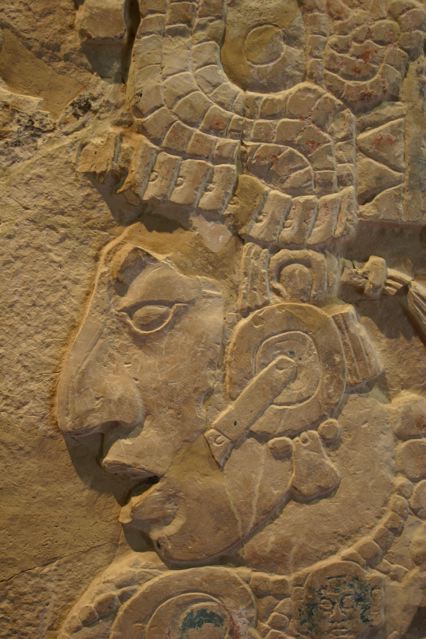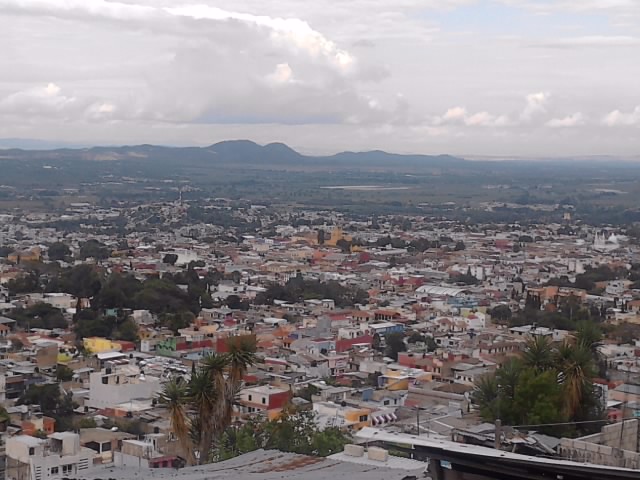|
Fanny López Jiménez
Fanny López Jiménez (born Tuxtla Gutiérrez, Chiapas, 1970) is a Mexican archaeologist known for her excavations at Palenque, including the discovery of the Tomb of the Red Queen. López Jiménez studied archaeology at the National School of Anthropology and History in Mexico City. She completed her first fieldwork in Lagartero near Comitán and shortly after, in 1991, performed excavation practices in Palenque, on the north side El Palacio. The remains of the Red Queen were found on 11 April 1994 in the Temple XIII internal substructure. After further research it was López Jiménez who proposed that the identity of the formerly unknown woman was Hun K'Anleum, "Señora 1 Telaraña" ("Lady 1 Cobweb") in her article "Quién es la Reina Roja?" (Who is the Red Queen?) in ''Arqueología Mexicana ''Arqueología Mexicana'' (Mexican Archaeology) is a bimonthly journal published by Editorial Raíces and the Mexican Instituto Nacional de Antropología e Historia (National Institute of ... [...More Info...] [...Related Items...] OR: [Wikipedia] [Google] [Baidu] |
Palenque - Rote Königin 1
Palenque (; Yucatec Maya: ), also anciently known in the Itza Language as Lakamhaʼ ("Big Water or Big Waters"), was a Maya city state in southern Mexico that perished in the 8th century. The Palenque ruins date from ca. 226 BC to ca. 799 AD. After its decline, it was overgrown by the jungle of cedar, mahogany, and sapodilla trees, but has since been excavated and restored. It is located near the Usumacinta River in the Mexican state of Chiapas, about 130 km (81 mi) south of Ciudad del Carmen, above sea level. It averages a humid 26°C (79°F) with roughly of rain a year. Palenque is a medium-sized site, smaller than Tikal, Chichen Itza, or Copán, but it contains some of the finest architecture, sculpture, roof comb and bas-relief carvings that the Mayas produced. Much of the history of Palenque has been reconstructed from reading the hieroglyphic inscriptions on the many monuments; historians now have a long sequence of the ruling dynasty of Palenque in the 5th century and e ... [...More Info...] [...Related Items...] OR: [Wikipedia] [Google] [Baidu] |
Palenque
Palenque (; Yucatec Maya language, Yucatec Maya: ), also anciently known in the Itza Language as Lakamhaʼ ("Big Water or Big Waters"), was a Maya city City-state, state in southern Mexico that perished in the 8th century. The Palenque ruins date from ca. 226 BC to ca. 799 AD. After its decline, it was overgrown by the Selva Lacandona, jungle of cedar, mahogany, and sapodilla trees, but has since been excavated and restored. It is located near the Usumacinta River in the Mexican state of Chiapas, about 130 km (81 mi) south of Ciudad del Carmen, above sea level. It averages a humid 26°C (79°F) with roughly of rain a year. Palenque is a medium-sized site, smaller than Tikal, Chichen Itza, or Copán, but it contains some of the finest architecture, sculpture, roof comb and bas-relief carvings that the Maya civilization, Mayas produced. Much of the history of Palenque has been reconstructed from reading the hieroglyphic inscriptions on the many monuments; historians now have a l ... [...More Info...] [...Related Items...] OR: [Wikipedia] [Google] [Baidu] |
Tomb Of The Red Queen
The Tomb of the Red Queen is a burial chamber containing the remains of a noblewoman, perhaps Lady Ix Tz'akbu Ajaw, and two servants, located inside Temple XIII in the ruins of the ancient Maya city of Palenque, now the Palenque National Park, in the Chiapas state in southern Mexico. It has been dated to between 600 and 700 AD. The tomb was discovered in 1994 by the Mexican archeologist Fanny Lopez Jimenez after being commissioned to perform routine stabilization work on a set of temple stairs by the local Archaeologist Arnoldo Gonzalez Cruz. It takes its popular name from the fact that the remains of the noblewoman and the objects in the sarcophagus were covered with bright red cinnabar powder when the tomb was discovered. Temple XIII Palenque was one of the wealthiest and most powerful of the Maya city states in Pre-Columbian Mexico. It was located in the foothills of the Chiapas mountains, on a site where several rivers come together, with waterfalls and pools; the name of t ... [...More Info...] [...Related Items...] OR: [Wikipedia] [Google] [Baidu] |
National School Of Anthropology And History
National School of Anthropology and History (in Spanish: ''Escuela Nacional de Antropología e Historia, ENAH'') is a Mexican Institution of higher education founded in 1938 and a prominent center for the study of Anthropology and History in the Americas. It is part of Mexico's National Institute of Anthropology and History (INAH) and offers bachelor's and postgraduate degrees in Anthropology and its disciplines: Linguistics, Social Anthropology, Ethnology, Archaeology, Physical Anthropology, Ethnohistory and History History (derived ) is the systematic study and the documentation of the human activity. The time period of event before the History of writing#Inventions of writing, invention of writing systems is considered prehistory. "History" is an umbr .... External links Official website Map here Universities in Mexico City Public universities and colleges in Mexico Research institutes in Mexico Mesoamerican studies Educational institutions established in 1938 ... [...More Info...] [...Related Items...] OR: [Wikipedia] [Google] [Baidu] |
Comitán
Comitán (; formally: Comitán de Domínguez, for Belisario Domínguez ''Enciclopedia de los Municipios de México'') is the fourth-largest city in the of . It is the seat of government of the municipality of the same name. It is located in the east-central part of Chiapas, near the border with at . The mun ... [...More Info...] [...Related Items...] OR: [Wikipedia] [Google] [Baidu] |
Arqueología Mexicana
''Arqueología Mexicana'' (Mexican Archaeology) is a bimonthly journal published by Editorial Raíces and the Mexican Instituto Nacional de Antropología e Historia (National Institute of Anthropology and History). The first issue, devoted to Teotihuacán, was published in April–May in 1993. ''Arqueología Mexicana'' contains articles by scholars, a wide selection of photographs on the diverse Mesoamerica Mesoamerica is a historical region and cultural area in southern North America and most of Central America. It extends from approximately central Mexico through Belize, Guatemala, El Salvador, Honduras, Nicaragua, and northern Costa Rica. W ...n cultures, as well as maps and timelines that provide a modern understanding of the Mesoamerican legacy. References External links * WorldCat record 1993 establishments in Mexico Archaeology magazines Bi-monthly magazines Magazines established in 1993 Magazines published in Mexico Spanish-language magazines {{ar ... [...More Info...] [...Related Items...] OR: [Wikipedia] [Google] [Baidu] |
Mexican Archaeologists
Mexican may refer to: Mexico and its culture *Being related to, from, or connected to the country of Mexico, in North America ** People *** Mexicans, inhabitants of the country Mexico and their descendants *** Mexica, ancient indigenous people of the Valley of Mexico ** Being related to the State of Mexico, one of the 32 federal entities of Mexico ** Culture of Mexico *** Mexican cuisine *** historical synonym of Nahuatl, language of the Nahua people (including the Mexica) Arts and entertainment * The Mexican (short story), "The Mexican" (short story), by Jack London * The Mexican (song), "The Mexican" (song), by the band Babe Ruth * Regional Mexican, a Latin music radio format Films * The Mexican (1918 film), ''The Mexican'' (1918 film), a German silent film * The Mexican (1955 film), ''The Mexican'' (1955 film), a Soviet film by Vladimir Kaplunovsky based on the Jack London story, starring Georgy Vitsin * ''The Mexican'', a 2001 American comedy film directed by Gore Verbinski ... [...More Info...] [...Related Items...] OR: [Wikipedia] [Google] [Baidu] |
1970 Births
Events January * January 1 – Unix time epoch reached at 00:00:00 UTC. * January 5 – The 7.1 Tonghai earthquake shakes Tonghai County, Yunnan province, China, with a maximum Mercalli intensity of X (''Extreme''). Between 10,000 and 14,621 were killed and 26,783 were injured. * January 14 – Biafra capitulates, ending the Nigerian Civil War. * January 15 – After a 32-month fight for independence from Nigeria, Biafran forces under Philip Effiong formally surrender to General Yakubu Gowon. February * February 1 – The Benavídez rail disaster near Buenos Aires, Argentina, kills 236. * February 10 – An avalanche at Val-d'Isère, France, kills 41 tourists. * February 11 – '' Ohsumi'', Japan's first satellite, is launched on a Lambda-4 rocket. * February 22 – Guyana becomes a Republic within the Commonwealth of Nations. March * March 1 – Rhodesia severs its last tie with the United Kingdom, declaring itself a republic. * March 4 — All 57 m ... [...More Info...] [...Related Items...] OR: [Wikipedia] [Google] [Baidu] |
Living People
Related categories * :Year of birth missing (living people) / :Year of birth unknown * :Date of birth missing (living people) / :Date of birth unknown * :Place of birth missing (living people) / :Place of birth unknown * :Year of death missing / :Year of death unknown * :Date of death missing / :Date of death unknown * :Place of death missing / :Place of death unknown * :Missing middle or first names See also * :Dead people * :Template:L, which generates this category or death years, and birth year and sort keys. : {{DEFAULTSORT:Living people 21st-century people People by status ... [...More Info...] [...Related Items...] OR: [Wikipedia] [Google] [Baidu] |
People From Chiapas
A person ( : people) is a being that has certain capacities or attributes such as reason, morality, consciousness or self-consciousness, and being a part of a culturally established form of social relations such as kinship, ownership of property, or legal responsibility. The defining features of personhood and, consequently, what makes a person count as a person, differ widely among cultures and contexts. In addition to the question of personhood, of what makes a being count as a person to begin with, there are further questions about personal identity and self: both about what makes any particular person that particular person instead of another, and about what makes a person at one time the same person as they were or will be at another time despite any intervening changes. The plural form "people" is often used to refer to an entire nation or ethnic group (as in "a people"), and this was the original meaning of the word; it subsequently acquired its use as a plural form of ... [...More Info...] [...Related Items...] OR: [Wikipedia] [Google] [Baidu] |







_1938.jpg)